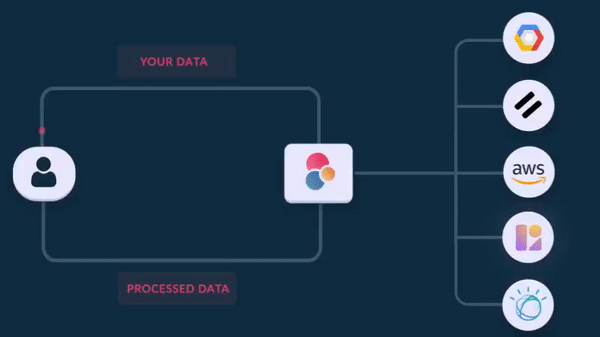In this tutorial, you will learn how to use Speech-to-Text API in 5 minutes using Python. Eden AI provides an easy and developer-friendly API that allows you to transcribe your audio files.
What is Speech-to-Text API?
Speech-to-Text (STT) API allows users to easily convert spoken words into written text. With the help of Natural Language Processing (NLP) and Machine Learning algorithms, the STT API can analyze your audio input and transcribe it into written text, whether you're speaking in real-time or have a recorded audio file. This technology is used in a variety of applications, from voice-controlled devices and virtual assistants to transcription services.
Get Started with Speech-to-Text API using Python
The first step is to install Python's requests package, that will allow you to call Eden AI API.

Next, you'll need to install Python's JSON package in order to read and print the result of the API request.

How to Transcribe an Audio File with Python
You are now ready to process your audio file into Eden AI Speech-to-text API. You can access the list of languages supported in our documentation here.
1. Get a Speech-to-Text API Key on Eden AI
To perform Speech-to-Text, you'll need to create an account on Eden AI for free. Then, you will be able to get your API key directly from the homepage with free credits offered by Eden AI.
2. Let’s Transcribe your Audio File
Now that you have imported packages on Python and got your API key, you will be able to transcribe your audio file. With Eden AI, you can choose from a wide range of engines you want for Speech-to-Text. You can access the list of Speech-to-Text providers available on Eden AI directly on our documentation.
Here is the Python script you need to write on your notebook:
For example, we called two different Speech-to-text engines. Eden AI API will then return in its JSON response results of those providers.
Eden AI Speech-to-text API is an asynchronous API. It means that you will get in response an ID:
Then you will need to perform a GET request to check the status of the API request (success, processing, failed):
You will first get this response:
Once the request is done (status : finished), you will be able to get the result with this print:

Benefits of using Speech-to-Text API with Eden AI
As you can see, using Speech-to-Text with Eden AI API is quick and easy.
Save time and cost
We offer a unified API for all providers: simple and standard to use, with a quick switch between providers and an access to the specific features of each provider.
Easy to integrate
The JSON output format is the same for all suppliers thanks to Eden AI's standardisation work. The response elements are also standardised thanks to Eden AI's powerful matching algorithms.
Customization
With Eden AI you have the possibility to integrate a third-party platform: we can quickly develop connectors. To go further and customize your Speech-to-Text request with specific parameters, check out our documentation.










Top comments (1)